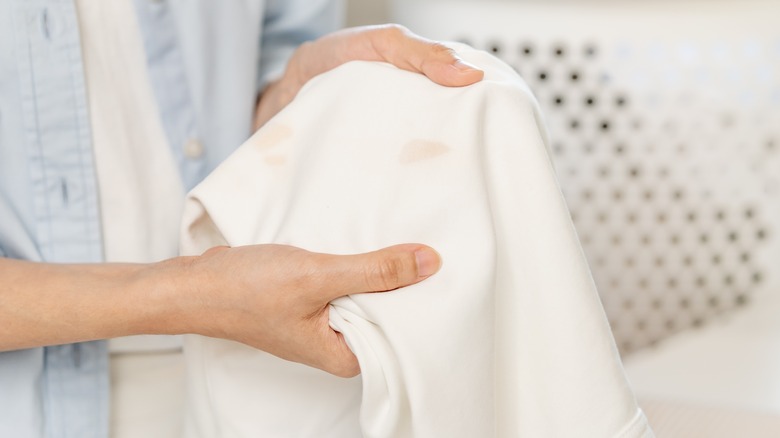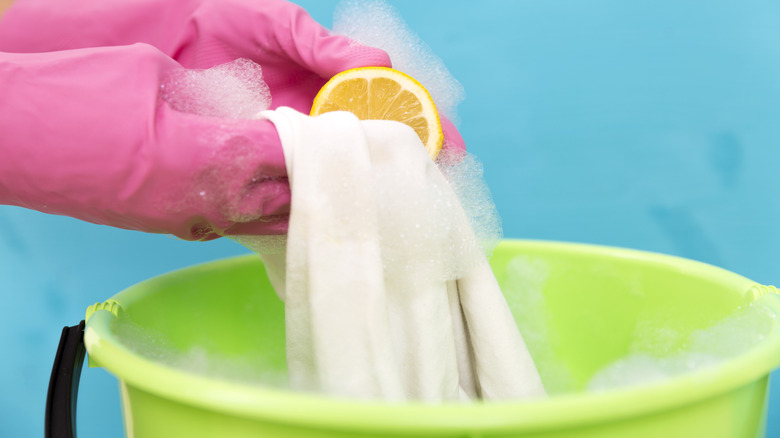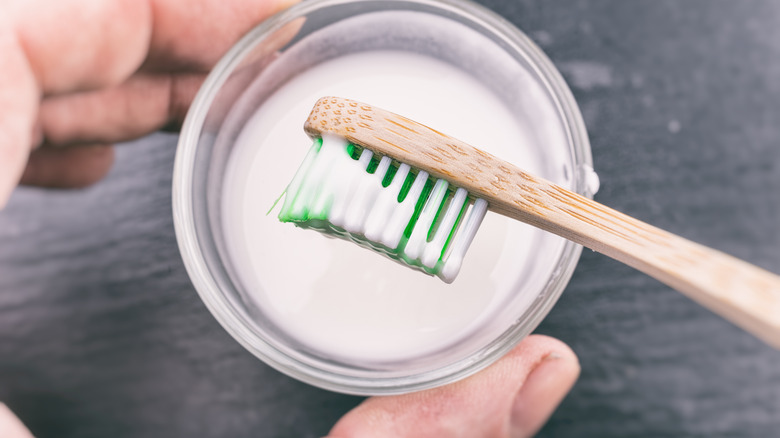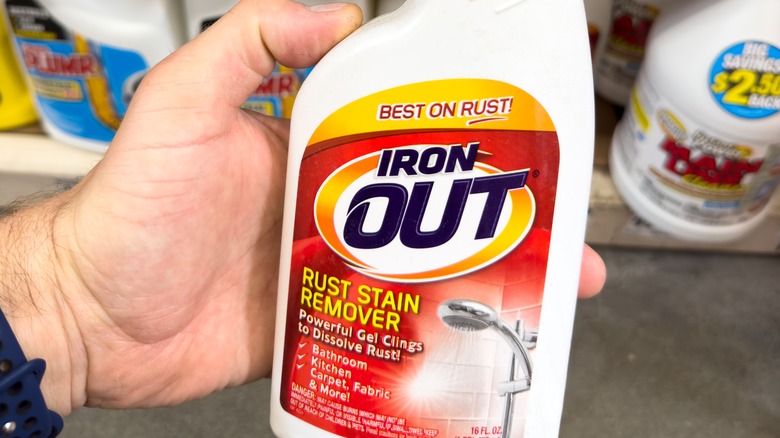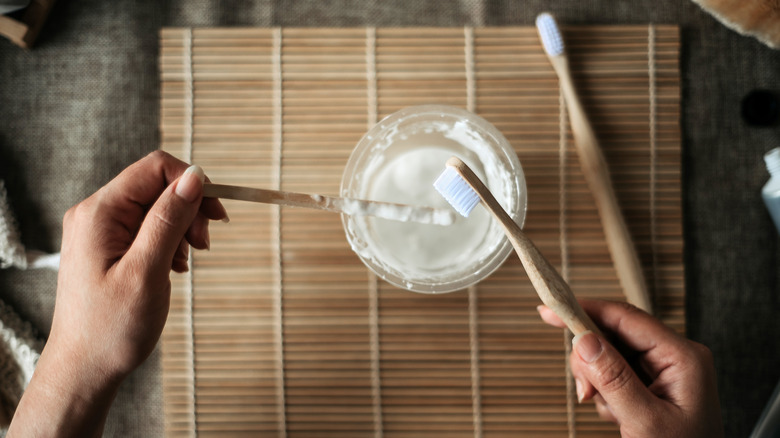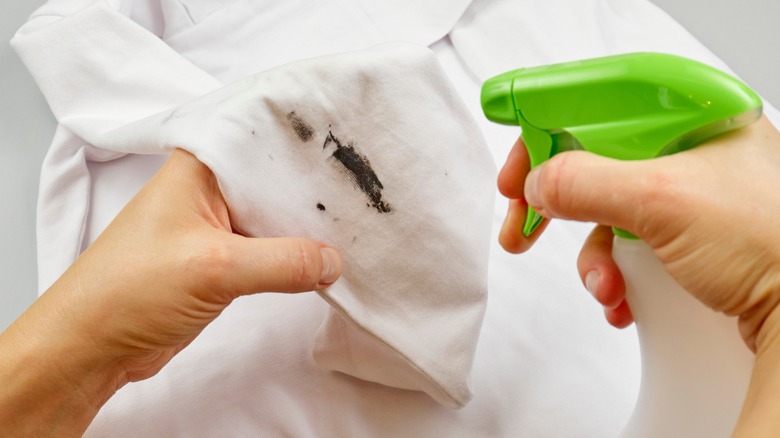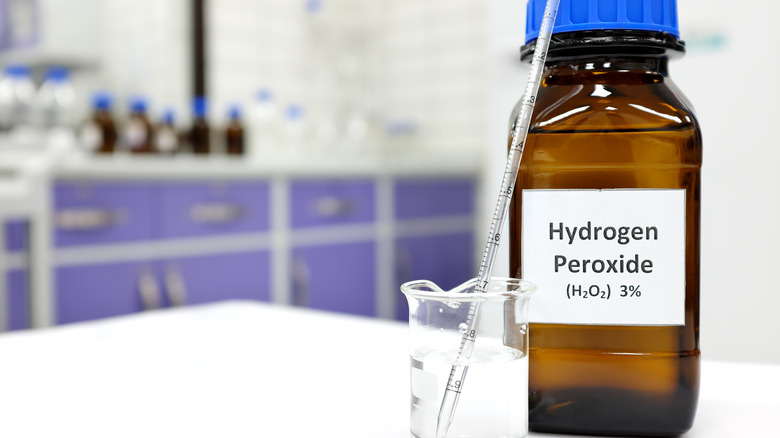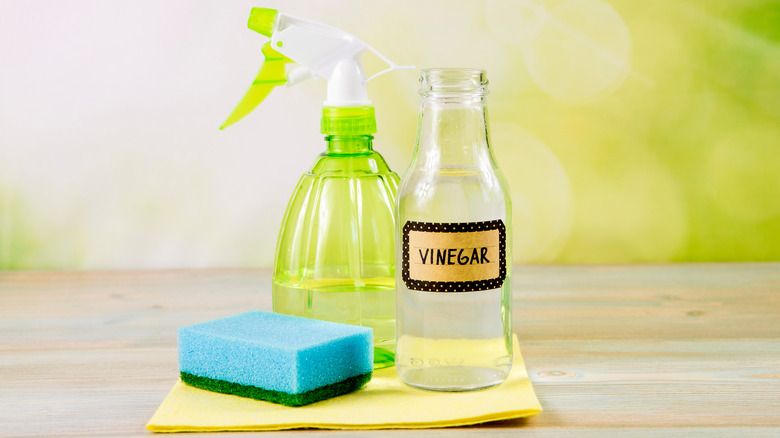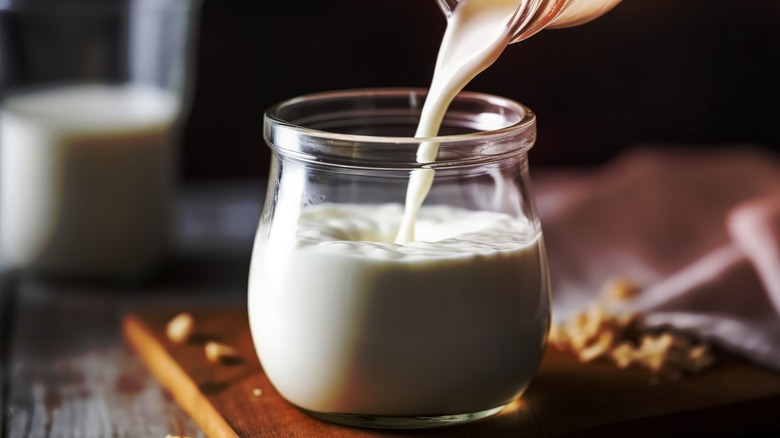The 8 Best Ways To Tackle Unsightly Rust Stains On Clothing
When faced with the tough challenge of rust stains on laundry, you quickly realize that this isn't an ordinary chore. These stains need a unique strategy that differs from the typical laundry process. It's a situation that goes above basic cleanliness; it's about keeping your clothing from ending up unwearable. Rust stains are notoriously difficult to remove, leaving dark-colored blotches on the fabric, and they also have a chance of being permanent, resisting ordinary cleaners and destroying sensitive fabrics.
Understanding how to remove rust efficiently is critical — without this information, your efforts could prove worthless, ruining your clothing. Fortunately, there are a variety of ways to remove these stains; some are advised by cleaning specialists, and others are anecdotal treatments. Understanding the process behind each strategy lets you make an informed decision and choose a solution that is right for your particular case. The final goal is to give you what you need to face these tough rust stains head-on, ensuring your clothes last and look clean and neat each time you wear them.
Lemon juice and salt
Household uses for lemon juice and salt range from removing rust stains to cleaning. To get rid of rust, lay your clothing on a flat surface. If you can, find a spot outside in the direct light. Squeeze fresh lemon juice onto the rust stain and let it soak in. Next, sprinkle a layer of salt over the area you soaked with lemon juice, ensuring you cover everything. Get an old toothbrush and gently rub the salt into the rust stain to create a paste. Rubbing the mixture in helps it sink into the fabric's fibers. Leave the clothing in the direct sun for three to four hours, or until the mixture dries. The rays from the sun activate the lemon juice, boosting the stain-removing properties. After the garment dries, check the stain. If it's visible, repeat the whole process. Once the stain is out, wash your piece of clothing as you usually would, preferably in warm water, to rinse any salt and lemon juice residue.
Lemon juice has a high amount of citric acid, and cleaners say it'll break down iron oxide molecules in rust to help lift the stain. Sunlight enhances this process as it acts like a natural bleaching agent. The sun's ultraviolet rays react with the lemon juice, boosting the stain-removal and bleaching properties. In turn, this accelerates how fast the rust breaks down.
Baking soda paste
One baking soda cleaning hack is to use the product to remove rust. To do so, get a small bowl and mix baking soda with water to create an abrasive paste. Start by adding a few tablespoons of baking soda to the bowl and gradually add water, stirring constantly until you get a thick consistency. You want it to be spreadable and not runny. Apply the paste to the rust stain to cover the whole spot. Gently work the paste into the fabric, and apply slight pressure to help the baking soda get into the fibers. Once it's in, leave it alone for an hour to give the baking soda time to react to the rust and break its bonds with the fabric. After an hour, gently brush away the dried paste and rinse using cold water.
Baking soda has mild alkaline properties, and when you apply it to a rust stain, it reacts with iron oxide. This reaction helps loosen the rust from the fibers, making it easier to rinse away. Also, the abrasive nature of this cleaner gently scrubs as you work it in. Additionally, leaving the baking soda on the stain gives time for the chemical reaction to happen, increasing its effectiveness.
Rust remover
Rust removers are usually available online or in your local hardware store, and buying a fabric-specific one is essential. Test it first on a small area so you don't ruin your clothing. If it's safe, spread the rust remover directly over the stain. Cover the stain completely to saturate the fabric. Depending on the instructions, let it sit on the stain for the recommended time, allowing the chemicals to sink into the fabric and interact with it. Don't allow the product to dry on your clothes because it could stain, too. When the time is up, rinse the clothes with cold water and check for the stain. If it's gone, you can wash it. If you still see it, treat the area again until you can't see it anymore. Ensure your space has good ventilation, because these stronger cleaning products can have strong smells.
Specialized fabric rust removers come with strong chemicals that effectively treat rust stains. The acids in the product react on a chemical level with rust's iron oxide, slowly breaking down the structure and dissolving it. It targets rust specifically, letting it get rid of the stains without damaging the fabric. However, it's important to carefully follow the instructions on the package due to how strong the chemicals are.
Toothpaste and salt
Mix a white, non-gel toothpaste with equal parts table salt in a small bowl. Stir these ingredients until you get a thicker paste that doesn't run. Generally, you'll start with a teaspoon of each and work your way up, depending on the stain's size. Apply the paste to the stain and gently work it with your fingers. Both ingredients are abrasive, and this will help to break down the rust over 10 to 15 minutes. Once the time is up, rinse the stained area with cold water to remove lingering toothpaste and salt. Check for a stain, and repeat the process if you can still see it. Once you're satisfied, wash your clothing like normal. As always, conducting a patch test on a hidden area of the fabric is recommended before treating the stain.
When you apply the toothpaste and salt, the mild abrasiveness scrubs at the fabric's surface, loosening any rust particles present. Salt crystals give this solution more scrubbing power, helping to further break down and dislodge the rust particles. This method is best for rust stains that aren't totally set or very deep in the fabric. Think of it as more of a surface cleaner than digging into the fabric's fibers to extract the rust.
Laundry stain fighter
Try a commercial-grade laundry stain remover, like OxiClean or Shout, to remove rust stains from your clothing. Before applying it, read the product instructions so you understand the correct way to use it, keeping any safety precautions in mind. Depending on the strength of the stain fighter, wearing gloves is advisable to protect your hands. Lay the clothing flat and apply the stain fighter directly to the rust spot. Saturate the area, avoiding soaking the non-stained parts before allowing them to sit on the stain for the recommended time, usually up to 30 minutes. Rinse after the allotted time in cold water, check for a stain, and redo the process or wash it as usual.
Commercial-grade laundry stain fighters formulated to lift rust stains from fabric have a mixture of specific ingredients that break down the stain. These ingredients may be certain acids, like hydrofluoric acid or chelating agents that bind the ions in the rust. When you apply them to the stain, they react and break the molecular bond with the fabric, allowing you to rinse them away. The reaction transforms your rust into a water-soluble substance that will wash out.
Hydrogen peroxide and cream of tartar
You can create a paste using cream of tartar and hydrogen peroxide to remove rust stains. Mix equal parts of cream of tartar and hydrogen peroxide in a bowl to get a thick paste. Adjust how much you mix based on your stain size, starting with a tablespoon of each. Apply this paste to the stain on a clean, flat surface. Use the back of a spoon to get a thick, even application, and allow it to sit on the stain for 30 to 45 minutes to start lightening it. Gently scrape off as much paste as you can and rinse the garment in cold water. If you can still see the stain, repeat the process. This works best on light-colored fabrics, and you want to test a small spot to ensure it doesn't discolor the fabric.
The peroxide in the mixture acts like a mild bleaching solution to lighten the rust stain. It has oxidizing properties that break down the rust, making the stain less intense. Cream of tartar's mild acidity complements the peroxide's bleaching action to break down the stain more. When you combine these two ingredients, the paste ensures the ingredients stay in contact with the stain for the entire duration.
White vinegar and salt
Did you know there are several white vinegar laundry hacks you can use to banish stains? To tackle stubborn rust stains using salt and white vinegar, lay your garment on a hard, clean, flat surface. Carefully pour enough white vinegar onto the stain to fully saturate the area. Allow the vinegar to sit for 30 minutes so it has time to start breaking down the rust. After it soaks, sprinkle a thick layer of salt over the area, ensuring it covers the stained spot to create a thick coating. Take a soft-bristled brush and scrub at the stain to help dislodge the rust particles from the fabric. After scrubbing, leave the salt and vinegar mixture on the garment for another hour and then rinse with water. Now, just run it through the washing machine as you normally would.
Why white vinegar and salt work to lift rust stains is due to their chemical properties and how they react. White vinegar has acetic acid, a very mild acid that breaks down rust. This acid interacts with the iron oxide in the stain, dissolving it and loosening the bond with the fabric's fibers. Adding salt brings a granular substance to the mix, giving you an abrasive texture that helps gently scrub the stain.
Buttermilk
Buttermilk may be able to remove rust from white clothing. To test it, pour enough buttermilk into a bucket or basin to submerge your clothing item, or at least the stained portion, and let it soak. Leave it alone for at least an hour to let the acidic properties in the buttermilk get deep into the fibers. For set-in stains, you may end up soaking it overnight. After you finish, remove the clothing from the buttermilk and gently scrub at the stain with a soft-bristled brush — this will help loosen the stain further. Rinse the clothing in cold water to get rid of the buttermilk. You'll have to repeat the process if you can still see the stain. To finish, wash it on your regular washing cycle.
Buttermilk may be effective for removing stains from white and delicate fabrics because of its mild acidic properties. The lactic acid content helps break down rust, making them easier to wash out. We didn't find any scientific proof backing this method, so it's primarily based on anecdotal evidence, but the acidic nature of buttermilk seems to be why it can work. Also, buttermilk's natural composition means it's gentle on fabrics, unlike more potent chemical-based rust removers.
